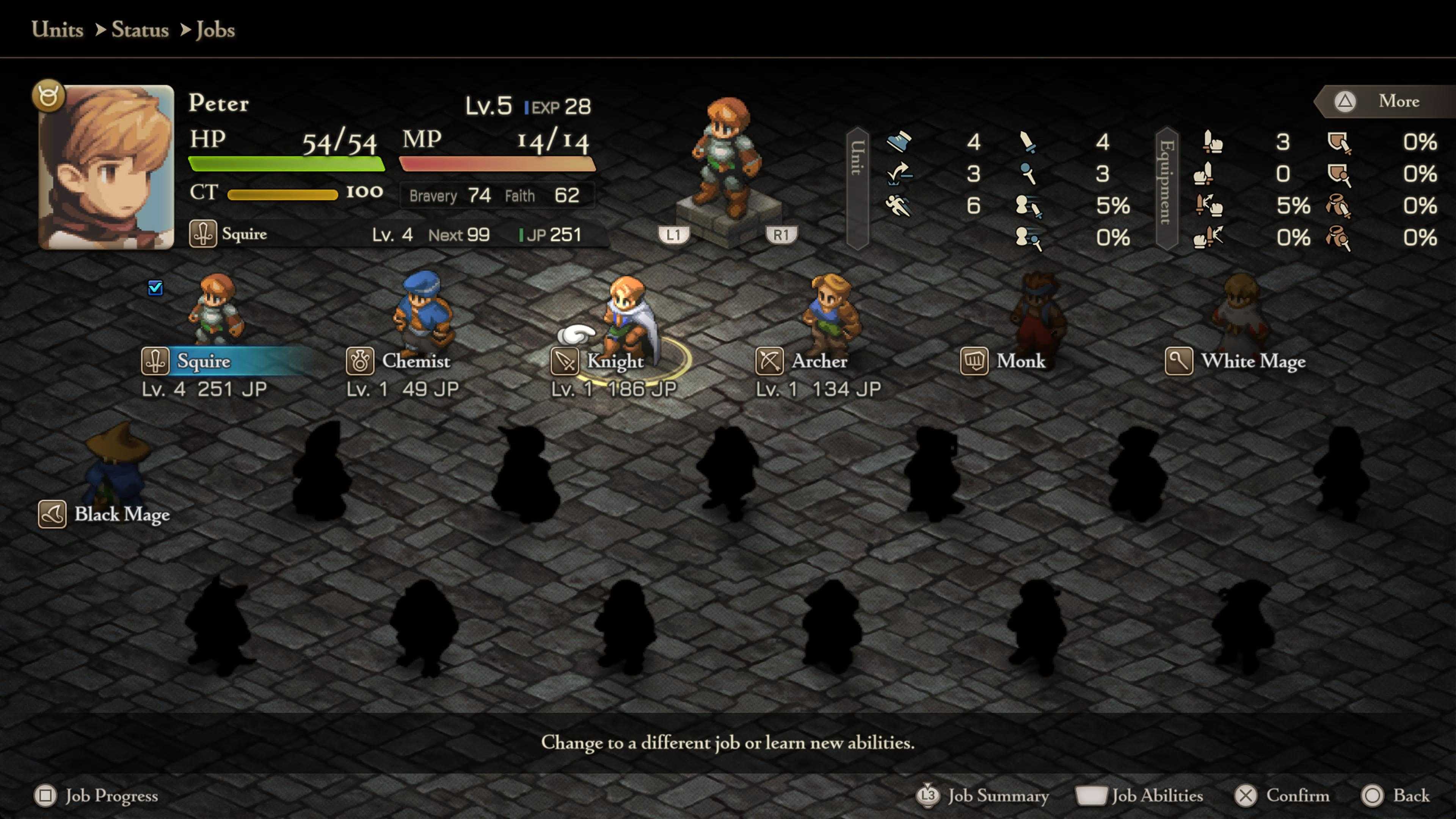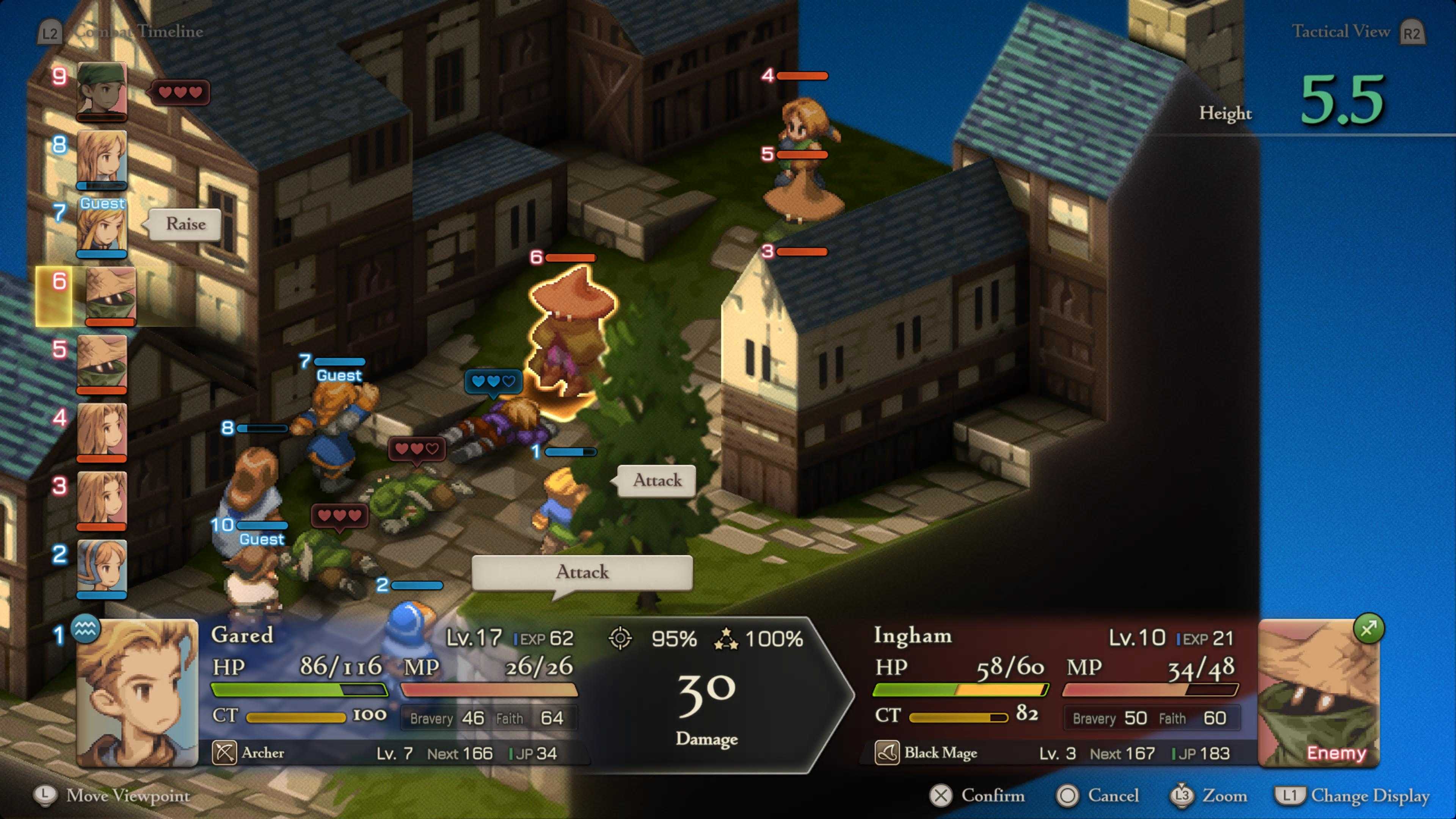*Minor spoilers contained for Final Fantasy Tactics: The Ivalice Chronicles
Final Fantasy Tactics: The Ivalice Chronicles contains a traditional level structure that fans might be familiar with, having played Final Fantasy games in the past. This being said, the way you level a character is different, using a system common in Tactical RPGs that is different from the standard win a battle, reap the benefits structure. On top of this, the tactical XP gain is combined with the Job system of some classical Final Fantasy games. This leveling system is similarly structured to reward you similarly to that of a tactical game, but at its most familiar is still a system modern fans might be unfamiliar with, as Square Enix tends to use the job system in other franchises like Bravely Default, rather than the flagship system that spawned it.
Experience isn’t rewarded for winning battles but rather for taking part in a battle, and this means more than just selecting a unit. Every time one of your units attacks an enemy, they will be rewarded with both standard and job experience points. If you bring a unit into combat but never use it, hide it in the back somewhere, then that unit will gain nothing, putting the emphasis on using and risking them for reward. If a unit defeats an enemy, it will receive more experience than simply hitting an enemy, so there is some strategy if you want one unit to get the benefit of the kill, but the game has tons of free battles, making this less of something you should worry about. This system goes a step further because the game has perma-death should your unit remain downed for too long, which can undo ALL the work you have put into one, a make it a little scary to begin introducing new units you recruited into the fold as they start at level 1 and the scaling level system of fights mean enemies will be matched to the higher levels on your team, at least in non story missions (I will explain more on this in a bit)

Characters have traditional levels that influence their base stats and make them stronger in a traditional sense, similar to most RPG games. Experience gained in this vein will be smaller as you level up, as well as based on the level of the enemies compared to that character. The other experience you gain is called Job Points, which will not diminish in the same way as the other does, but it also feeds into a base level for your job. In addition to leveling up your job, these points are stored and can be used for skills applicable to that job. While most skills are only applicable to the class you unlocked them for, there are skills that specifically note they have no application to class, just as the archer ability that allows a unit to ignore class type when equipping bowguns or bows, which allows you to flush out the roundedness of a unit.
While the unit level is 99, a common max cap, especially at the time the game was originally released, jobs max out at level 8. Most characters will start specifically as a squire, which is a very balanced and basic class with no magic or range. The reason to try as many classes as you can is that higher-tier jobs, many of which serve as hybrid classes to give you even more freedom for your limited roster, can maximize your ability on the battlefield. These classes will not unlock or even become known until you invest some time into classes that unlock them, with classes unlocking upon reaching a certain level with one or more other classes, usually level 3, so it is very beneficial to toy around with as many classes as you can because, even if you don’t like a certain class this can lead to abilities to make a class you don’t like more to your taste, or help unlock a new class that does have what you are looking for. This will become important later on, regardless, as even the main missions become more challenging.

As I stated above, the game has level scaling that matches the highest member in your roster, not party, so bringing a bunch of level 1 characters into combat will just end in a lot of death if your best character, typically Ramza, is level 22, for instance. There is a workaround around, though, that does not require having a dedicated healer for a character that might not survive a full frontal attack in combat. Final Fantasy II has received a lot of criticism for its system, which can be broken by just having the party fight itself, but here, this system has much more value. Having low-level characters sit in the back and attack higher-level characters will again earn them experience for attacking, and let your healers get experience for fixing the damage. Free Battles can range in difficulty, but it’s easy to walk away from one you don’t like for another with more favorable conditions. Basically, are there six powerful enemies to fight, or only three easy-to-manage ones?
Once you reach Chapter 2, you will also unlock errand tasks you can take part in. While these do not offer experience for the party, a victorious completion of the tasks will reward the characters that participate in them with job points for very little actual work, making leveling their jobs up a little easier. Obviously, Final Fantasy Tactics: The Ivalice Chronicles is a long game with a lot of depth, but hopefully, with this basic guide, it should be a little easier to understand the fundamentals so you can build upon them as the game progresses.
Remember to follow us on Twitter, Facebook, and Bluesky to keep up to date on everything we have going on!